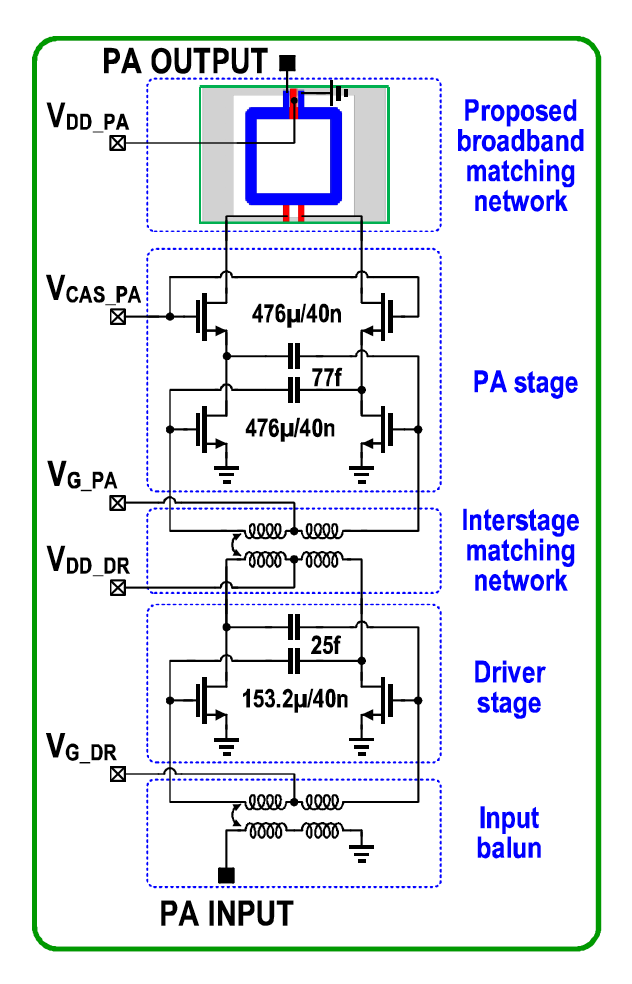This novel, compact low-loss broadband matching network was developed to directly address the contradiction between capacity requirements and spectrum shortage for mobile communications. Georgia Tech’s power amplifier-based network enables instantaneous 28, 37, and 39 GHz multi-band 5G operation without the need for tuning or reconfiguration, and it is the first technology of its kind providing 1 dB compression point (P1dB) output power bandwidth covering a range of 25.8-41.3 GHz. The network is built on a high-efficiency mm-wave power amplifier architecture that uses a hybrid coupler as the output network. It employs active load modulation to uniquely provide enhanced efficiency at deep power back-off of 12 dB. Efficiency is further improved with two efficiency peeks: 6 dB and 12 dB, respectively.
Essential for high throughput applications, this unprecedented networking technology could support future 5G communication, enhanced mobile broadband, massive multiple-input multiple-output (MIMO), and phased-array solutions. It is expected to be an enabling technology for emerging applications in the field of augmented, virtual, and mixed reality.
- Unmatched: Provides first-of-its-kind broadband performance with 26-41 GHz instantaneous 1 dB power gain bandwidth and 25.8-41.3 GHz instantaneous P1dB output power bandwidth—both of which far out-perform currently available techniques
- Simplified: Sidesteps the need for any tuning or reconfiguration while still providing best-in-class broadband performance
- Efficient: Significantly improves power amplifier back-off and average efficiency with two efficiency peaks and deep power back-off (12 dB), and maintains better than 38% power-added efficiency at P1dB
- Robust: Enables significant improvements in quality of service and battery life for wireless communication systems
- Enabling: Provides a foundation for future 5G communications, and supports drop-in upgrades for power amplifiers (PAs) in current mm-wave systems, potentially helping to extract more value from existing investments
Georgia Tech’s innovation can be applied broadly to benefit high-throughput applications, including:
- 5G communication systems
- Enhanced mobile broadband systems and applications
- Augmented, virtual, and mixed reality technologies and applications
Explosive growth in mobile traffic demand has brought the contradiction between capacity requirements and spectrum shortage into sharp focus. Solutions to address the problem popularly look at incorporating the mm-wave band into 5G networks, which would provide huge bandwidth increases and accommodate more mobile traffic – but not without the introduction of much complexity. PAs play a key role in wireless communication networks operating at both mm-wave and GHz bands; however, conventional wideband PA architectures suffer limitations. These include requirements for bulky wideband hybrids, staggered tuning that sacrifices gain and output power, large high-order matching networks with poor passive efficiency, or transformers that add complexity and make accurately guiding wideband PA architecture designs unnecessarily challenging.
Georgia Tech’s innovation addresses these challenges with a new wideband PA architecture that can achieve instantaneous mm-wave coverage across 5G bands with decreased complexity and increased efficiency in order to enable next-generation wireless communication systems.

A schematic of Georgia Tech’s broadband matching network.
